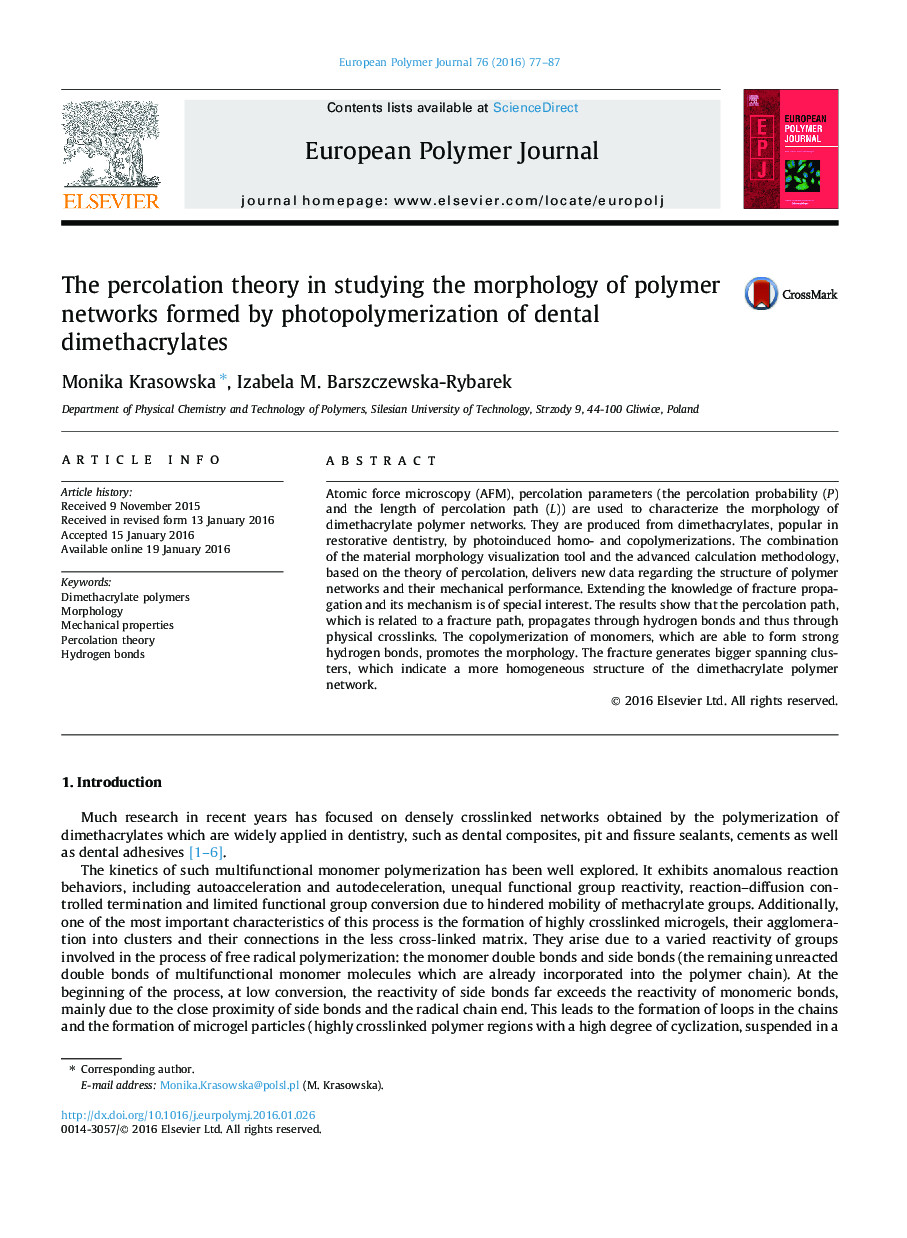| کد مقاله | کد نشریه | سال انتشار | مقاله انگلیسی | نسخه تمام متن |
|---|---|---|---|---|
| 1401511 | 1501359 | 2016 | 11 صفحه PDF | دانلود رایگان |
• Innovative use of percolation to describe dimethacrylate polymer networks morphology.
• Percolation probability and path length were determined for AFM images.
• Percolation path is related to fracture path.
• Percolation path propagates through hydrogen bonds and physical crosslinks.
• Strong hydrogen bonds promote morphological homogeneity.
Atomic force microscopy (AFM), percolation parameters (the percolation probability (P) and the length of percolation path (L)) are used to characterize the morphology of dimethacrylate polymer networks. They are produced from dimethacrylates, popular in restorative dentistry, by photoinduced homo- and copolymerizations. The combination of the material morphology visualization tool and the advanced calculation methodology, based on the theory of percolation, delivers new data regarding the structure of polymer networks and their mechanical performance. Extending the knowledge of fracture propagation and its mechanism is of special interest. The results show that the percolation path, which is related to a fracture path, propagates through hydrogen bonds and thus through physical crosslinks. The copolymerization of monomers, which are able to form strong hydrogen bonds, promotes the morphology. The fracture generates bigger spanning clusters, which indicate a more homogeneous structure of the dimethacrylate polymer network.
Percolation theory is used for describing the morphology of dimethacrylate polymer networks. Two parameters are calculated: the percolation probability (P) and the length of the path (L). They have a correlation with density, mechanical strength and impact resistance. The percolation path, which is related to a fracture path, propagates through hydrogen bonds and thus through physical crosslinks.Figure optionsDownload as PowerPoint slide
Journal: European Polymer Journal - Volume 76, March 2016, Pages 77–87
